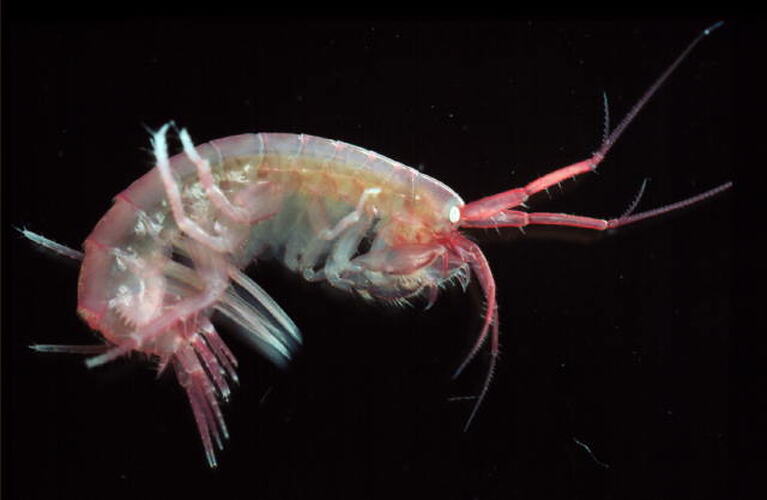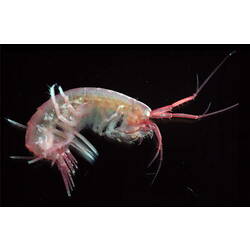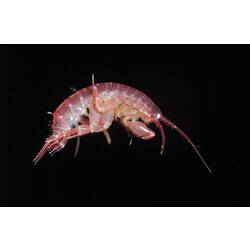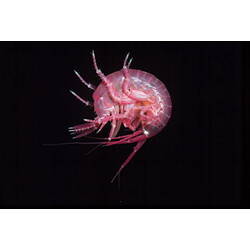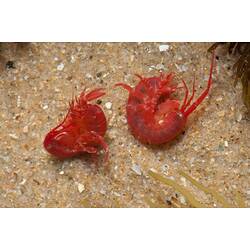General Description
Strongly laterally flattened species, with spikes along the edge of some of the segments of the abdomen and edges of the abdominal side-plates. Seven pairs of legs, first two chelate (with claws). Pale pink to bright red. Up to 20 mm long.
Biology
Small areas of marine sediments and clumps of macroalgae harbour hundreds of individuals and often many species of amphipods. These amphipods are very active when disturbed. Their mode of escape is the tail-flip, a rapid escape response where the abdomen flicks the animal away after the uropods are dug into the ground.
Distribution
South-eastern Australia.
Habitat
Intertidal areas in mud under rocks, to depth of 10 m.
More Information
-
Animal Type
-
Animal SubType
-
Brief Id
Laterally flattened, well developed abdomen, spikes along edge of some segments. Pale pink to bright red.
-
Maximum Size
20 mm
-
Habitats
-
Diet
Organic matter
-
Diet Categories
Organic matter
-
Endemicity
-
Commercial
No
-
Conservation Statuses
DSE Advisory List: Not listed, EPBC Act 1999: Not listed, IUCN Red List: Not listed
-
Depths
Shallow (1-30 m)
-
Water Column Locations
On or near seafloor
-
Taxon Name
-
Scientific Author
Barnard, 1972
-
Common Name
Amphipod
-
Phylum
-
Subphylum
-
Superclass
-
Class
-
Subclass
-
Superorder
-
Order
-
Suborder
-
Infraorder
-
Family
-
Genus
-
Species Name
dooliba
